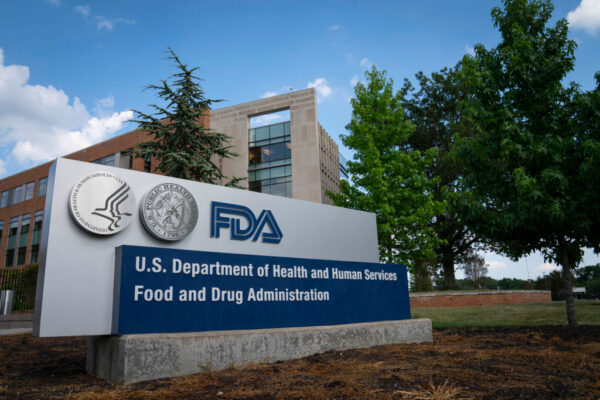
Cancer drug research is producing more targeted therapies that address particular genetic signatures. Last year saw a fair share of new targeted cancer therapies, but 2022 was also notable for the expansion of genetic insights beyond oncology. Three gene therapies won FDA approval and the growing list of such therapies in clinical testing suggests the trend will continue this year.
The three newly approved gene therapies are among the 42 drugs and biological products that won FDA nods in 2022. That total excludes imaging agents and diagnostic products, some of which are included in the FDA’s lists. Also excluded from the total are previously approved drugs that won additional approvals in new indications. The tally of new therapies approved in 2022 is less than the 60 new products approved in 2021, a year in which Covid-19 triggered a flood of research dollars that spread throughout the drug research sector and led to the first FDA-approved vaccines for the novel coronavirus.
The first gene therapy to win the FDA’s nod in 2022 was Zynteglo, a Bluebird Bio treatment for the rare blood disorder beta thalassemia. The biotech company followed that regulatory decision with an approval for Skysona, a gene therapy for cerebral adrenoleukodystrophy, an ultra-rare neurodegenerative disorder. But gene therapy is expanding to conditions that while still rare, address patient populations measured in the tens of thousands rather than in the thousands. Hemophilia B is one such disorder.
Approval of CSL Behring’s Hemgenix made that product the first gene therapy authorized for hemophilia B. The approval also set a record for the pricing of a therapy of any type. CSL is charging $3.5 million for its therapy, topping the prices of both Bluebird Bio products.
Gene therapy offers the potential to address genetic drivers of a disease with a one-time treatment. Thus, the potentially curative effects of gene therapy come with premium pricing. However, it’s worth noting that all of these products come with value-based agreements that tie the payer reimbursement of the therapy to defined outcomes demonstrating patient benefit. Industry observers say that as gene therapies become more prevalent, such agreements will become more common. Meanwhile, more gene therapies are on the way. Regulatory decisions to watch in 2023 include a BioMarin Pharmaceutical gene therapy for hemophilia A and a Bluebird gene therapy for sickle cell disease.
Moving on from gene therapy but staying within the realm of rare disease, 2022 saw several disorders receive their first-ever approved treatments. Sanofi drug Enjaymo and Agios Pharmaceuticals’ Pyrukynd are the first approved therapies for anemias caused by cold agglutinin disease and pyruvate kinase deficiency respectively. Acid sphingomyelinase deficiency, a rare disorder characterized by the lack of a key enzyme, now has its first FDA approved treatment: Sanofi’s Xenpozyme. The U.S. approval for Xenpozyme followed the approval of that product in Europe and Japan. In other metabolic drug news, Eli Lilly won the regulatory nod for Mounjaro, a type 2 diabetes drug projected to become a blockbuster seller.

A Deep-dive Into Specialty Pharma
A specialty drug is a class of prescription medications used to treat complex, chronic or rare medical conditions. Although this classification was originally intended to define the treatment of rare, also termed “orphan” diseases, affecting fewer than 200,000 people in the US, more recently, specialty drugs have emerged as the cornerstone of treatment for chronic and complex diseases such as cancer, autoimmune conditions, diabetes, hepatitis C, and HIV/AIDS.
Possibly the most high-profile approval of 2022 was the decision for Relyvrio, the Amylyx Pharmaceuticals treatment for amyotrophic lateral sclerosis. Two FDA advisory committee meetings were held last year for the drug—unusual for a single product. Along the way, the biotech navigated uncertainty about whether another clinical trial was needed to support its regulatory submission.
The FDA ultimately concluded it could review Relyvrio based on the results of one Phase 2 study. But in a surprising move, the agency granted the drug a standard approval rather than an accelerated one. Relyvrio’s September regulatory nod made it just the third drug approved to date for ALS.
Cancer therapies are a sure bet to top annual lists of new FDA-approved products and 2022 saw its share of new oncology products. But compared to previous years, this past one was a relatively slow one for new cancer drugs. A total of 14 new cancer products passed regulatory muster. One of the most closely watched of those drugs was Mirati Therapeutics’ Krazati for non-small cell lung cancer. The small molecule targets a rare mutation called KRAS G12C, and the Mirati drug’s approval puts it in direct competition with Amgen’s Lumakras.
Multiple myeloma is another type of cancer welcoming new products. Carvykti, a CAR-T therapy from Johnson & Johnson and Legend Biotech, is one of two multiple myeloma drug approvals for J&J this year. The agency also approved Tecvayli, a J&J antibody drug that goes after the same target as Carvykti. However, the subcutaneously injected formulation of Tecvayli is intended to offer patients a more convenient dosing option compared to intravenously infused cell therapies.
J&J may soon add a fifth therapy to its lineup of multiple myeloma products. During the recent annual meeting of the American Society of Hematology, the pharmaceutical giant presented data supporting its application for talquetamab, which could become the first drug approved to address the novel cancer target GPRC5D. That will be one of the regulatory decisions to watch for in 2023.
Photo: Getty Images, Sarah Silbiger












